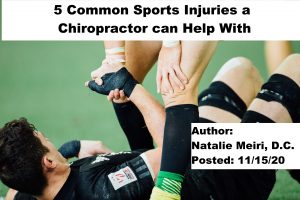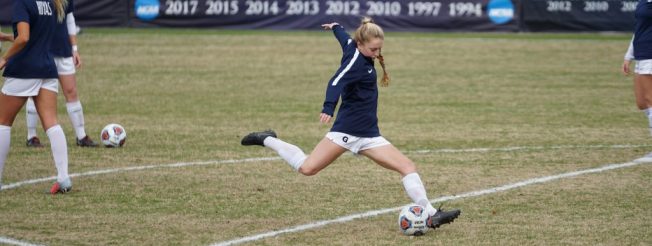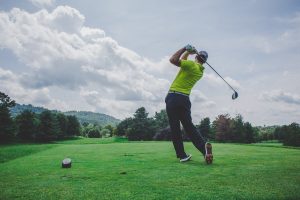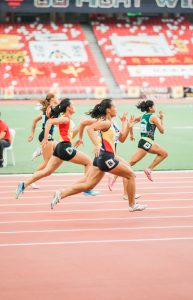
Whether you’re a high school all-star, professional in the big leagues or even a little league player, sports injuries occur when engaging in sports or exercise. Over training, lack of conditioning, and improper form or technique can lead to this. Also, failing to warm up increases the risk of sports injuries. Staying fit by eating right and exercising is very beneficial for your health and overall well-being. Bruises, strains, sprains, tears, and broken bones can result. Soft tissues like muscles, ligaments, tendons, fascia (band or sheet of connective tissue), and bursae (fluid-filled sac) may be affected. Therefore, you certainly don’t want an injury to set you back! Here are 5 common sports injuries a chiropractor can help with to learn about.

1. Contusion
Contusion is the medical term for a bruise. You may think of a bruise as a black-and-blue spot. So when small blood vessels get torn and leak blood under the skin, you get a bruise/contusion. A contusion is the result of a direct blow or an impact, such as a fall. For instance, it can happen in kickboxing class to your hand due to improper glove/equipment. The contusion may even be on your face. TMJ (temporomandibular) pain maybe a result of injury to the jaw or face (for example, a fall or hit that affects the chin).

2. Ankle Sprain
You may simply step on an uneven surface or land on the outside heel while running/jumping and get an ankle sprain. Moreover, if you keep getting subsequent sprains, ligament laxity (looseness of a limb or muscle) plays an important role.
The vast majority of ankle sprains are due to plantar flexion (movement in which the ankle and foot bends forward or downward) and inversion (bending the ankle and foot inward toward the mid-line of the body). Furthermore, these sprains involve the lateral (outer side) ligaments (fibrous connective tissue that connects bones to other bones). In a sequence of injury: the anterior talofibular (ankle bone and long, thin and side bone of the lower leg) ligament, calcaneofibular (heel bone and long, thin and side bone of the lower leg) ligament, and the posterior talofibular (rear ankle bone and long, thin and side bone of the lower leg) ligament which are the lateral (outer side) ligaments. The more rare eversion turning (movement where ankle/foot bends inside-out) sprain damages the medial (toward middle) ligament complex referred to as the deltoid ligament.
3) Medial Tibial Stress Syndrome (Shin Splints)
The pain of shin splints along the tibia (shinbone) is most likely caused by overuse. Hyperpronation of the foot (when the ankle bone turns inward and the rest of the foot turns outward) and tight heel cords, especially in joggers and runners, have been implicated. Several theories have been proposed, but nothing definite has been proven. The American Medical Association limited the definition to musculotendinous (muscle-tendon) inflammations, and excluded stress fractures (tiny cracks in a bone). Shin Splints are also common in dancers and military recruits.

4) Tennis Elbow (Lateral Epicondylitis) /Golfers Elbow (Medial Epicondylitis)
“Tennis elbow” is due to repetitive movements requiring forceful wrist extension (straightening arm so that the elbow joint is open), radial deviation (movement of bending the wrist to the thumb), and supination (movement where palm or forearm faces up). Other sports and occupational activities are also possible causes besides from tennis such as meat cutters, plumbers, and weavers. With tennis, novice players with poor backhand technique account for most cases. With professional players, forehand and serving may be the cause. The more frequently an individual plays, the higher the risk of developing tennis elbow.
With golfer’s elbow, you may feel medial (inside) elbow pain following a repetitive activity such as hammering or use of a screwdriver. In athletes, the inciting activity usually involves wrist flexion (bending) and pronation (palm or forearm faces down) such as in serving and overhead strokes. Golfing or throwing may also cause symptoms. You may also complain of pain or weakness on gripping.
5) Hamstring strain
Perhaps you were sprinting or jumping and you over contracted the hamstrings while in a position of stretch. You may be an athlete who feels a sudden pull or pop at the back of the thigh following a forceful knee extension maneuver. The hamstrings are a group of three muscles that run along the back of your thigh. They allow you to bend your leg at the knee. Tendons and aponeurosis (a sheet of pearly white fibrous tissue) connect the muscles with the structures (i.e. bones ) to be moved. Tearing of the hamstrings occurs most often at the junction of the muscle and aponeurosis . Avulsion of the ischial tuberosity (sitting bone) apophysis (natural protuberance from a bone for the attachment of muscles) is possible in younger athletes.

5 common sports injuries a chiropractor can help – Recovering from a Sports injury
While ice and rest from the inciting activity are a start. And you may try a drug for fast pain relief for the moment. This is not a long term solution. A sports injury chiropractor serving West Palm Beach, Palm Beach Gardens, Jupiter, Juno Beach and North Palm Beach can help you with the 5 common sports injuries a chiropractor can help with to get you back to your sport. Even better, prevent future injuries and achieve peak performance by ensuring proper alignment on a regular basis with chiropractic. Contact Meiri Chiropractic today on the 5 common sports injuries a chiropractor can help with and/or other ailments you may have.
Meiri Chiropractic
5601 Corporate Way, Ste 102
West Palm Beach, FL 33407
561-253-8984